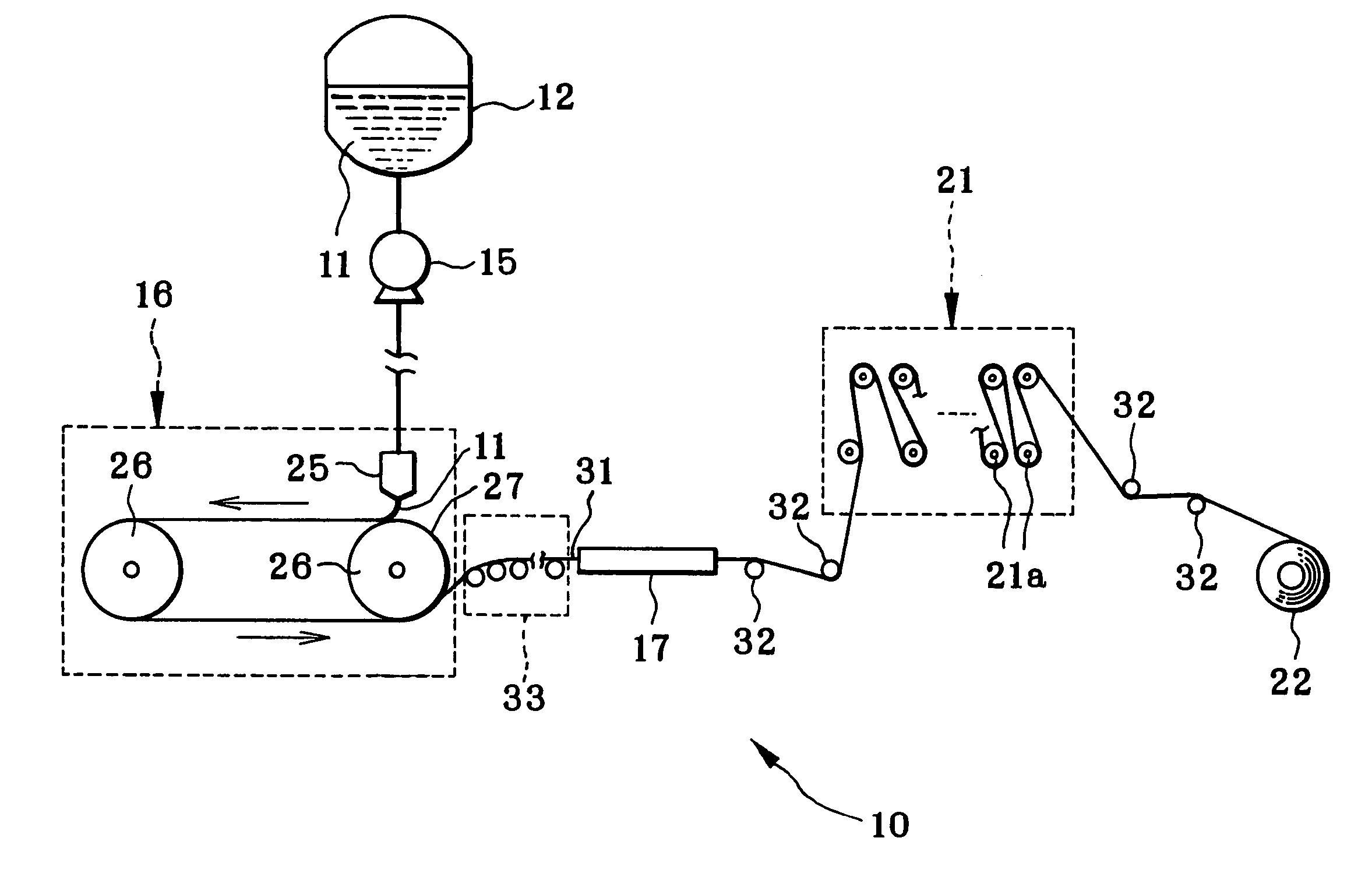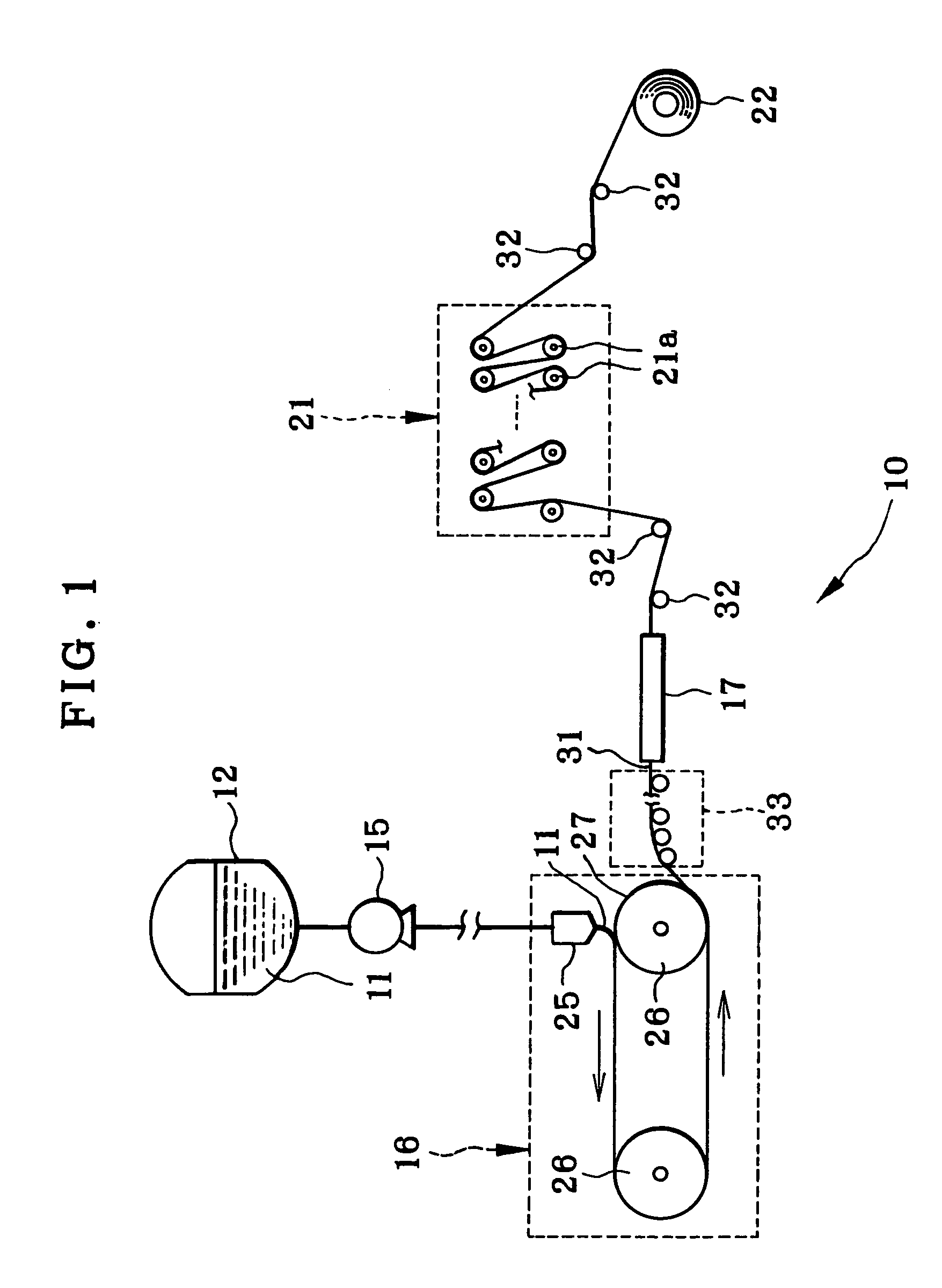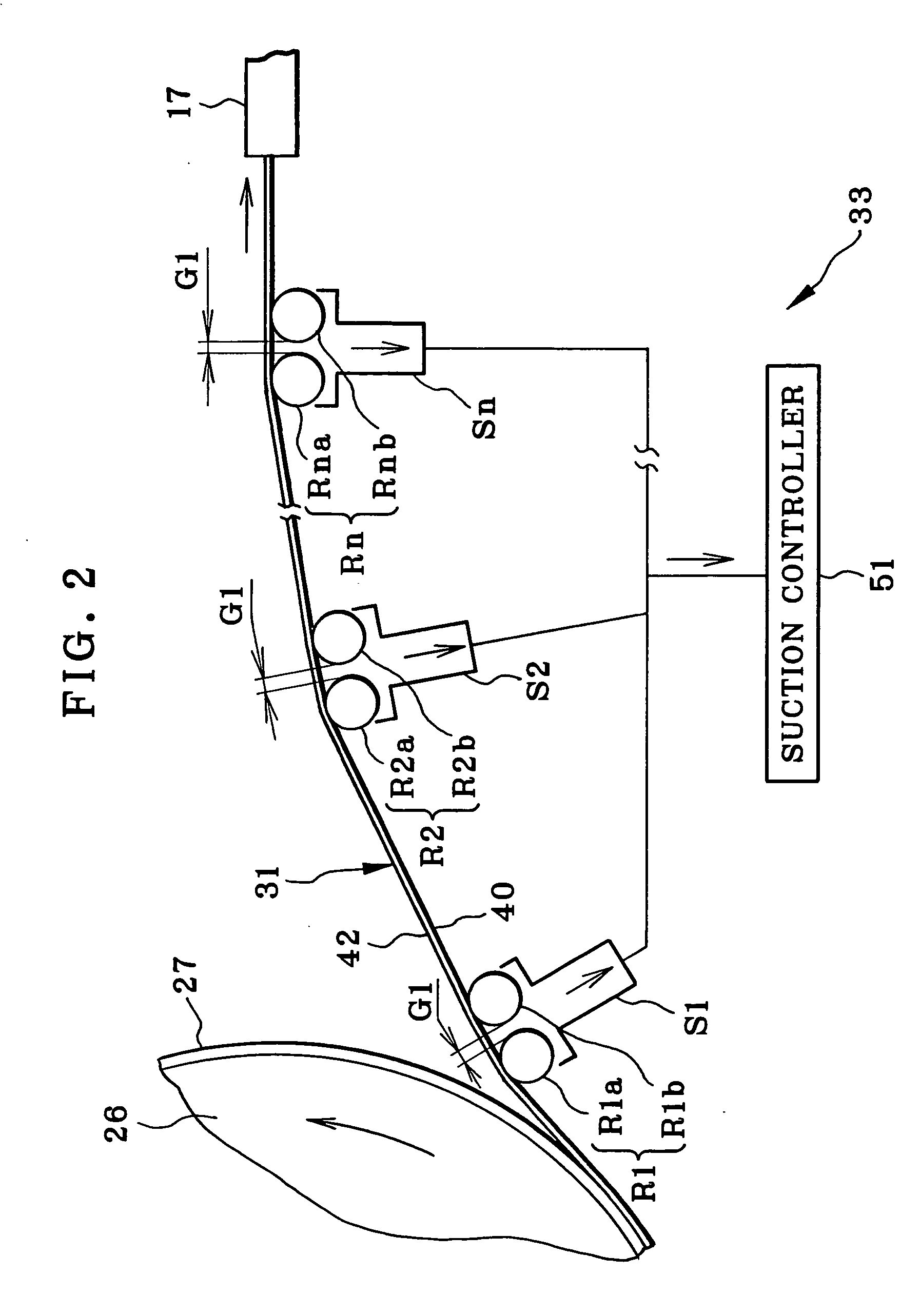Solution casting apparatus and process, cellulose acylate film, polarizing plate, and image display device
a technology of cellulose acylate film and casting apparatus, which is applied in the direction of polarizing elements, instruments, manufacturing tools, etc., can solve the problems of affecting the processing efficiency of the polarizing plate, the failure of the surface quality transport, so as to achieve good effects and keep the probability of failure very low
- Summary
- Abstract
- Description
- Claims
- Application Information
AI Technical Summary
Benefits of technology
Problems solved by technology
Method used
Image
Examples
example 1
[0077] In FIG. 1, the casting apparatus 10 was operated to produce cellulose triacetate film. The dope 11 containing cellulose triacetate and suitable organic solvent was prepared, and cast in such a manner that a width of the polymer film after stripping became 1,550 mm. The moving speed of the band-shaped support 27, which was equal to the stripping speed, was 50 m / min. The transporting speed of the polymer film in the tentering device 17 was at a proportion of 102.5% to the moving speed of the band-shaped support 27.
[0078] The transfer section 33 had the three roller sets R1-R3 as depicted in FIG. 2 and having the suction devices S1-S3. The roller R1a in the roller set R1 positioned the most upstream was used for stripping and separating the polymer film. In the roller set R1, the front roller R1b was 2 mm distant from the rear roller R1a. Similarly, in the roller sets R2 and R3, each of the rear rollers R2a and R3a was 2 mm distant from the front roller R2b or R3b. Surfaces of ...
example 2
[0081] This was basically the same as Example 1 but had differences as follows. The roller RA1 of FIG. 3 was added in the transfer section 60 and set upstream from the roller set R1. The roller sets having the suction device were three including R1-R3. The pressure of the suction was 150 Pa for the roller sets R1 and R2, and was 170 Pa for the roller set R3. The transporting speed of the polymer film in the tentering device 17 was at a proportion of 104% to the stripping speed from the band-shaped support 27. The polymer film 61 was formed to have a thickness of 80 microns.
[0082] As a result of Example 2, there was no failure in the transport. The polymer film 61 had good quality in the surface without occurrence of incidental folding of selvedges or wrinkles or streaks.
example 3
[0083] This was basically the same as Example 1 but had differences as follows. The roller RA1 of FIG. 3 was added in the transfer section 60 and set upstream from the roller set R1. The roller sets having the suction device were two, namely R1 and R2. The pressure of the suction was 120 Pa for the roller set R1, and was 150 Pa for the roller set R2. The transporting speed of the polymer film in the tentering device 17 was at a proportion of 102.5% to the stripping speed from the band-shaped support 27. The polymer film 61 was formed to have a thickness of 40 microns.
[0084] As a result of Example 3, there was no failure in the transport. The polymer film 61 had good quality in the surface without occurrence of incidental folding of selvedges or wrinkles or streaks.
PUM
| Property | Measurement | Unit |
|---|---|---|
| Thickness | aaaaa | aaaaa |
| Thickness | aaaaa | aaaaa |
| Speed | aaaaa | aaaaa |
Abstract
Description
Claims
Application Information
 Login to View More
Login to View More - R&D
- Intellectual Property
- Life Sciences
- Materials
- Tech Scout
- Unparalleled Data Quality
- Higher Quality Content
- 60% Fewer Hallucinations
Browse by: Latest US Patents, China's latest patents, Technical Efficacy Thesaurus, Application Domain, Technology Topic, Popular Technical Reports.
© 2025 PatSnap. All rights reserved.Legal|Privacy policy|Modern Slavery Act Transparency Statement|Sitemap|About US| Contact US: help@patsnap.com



